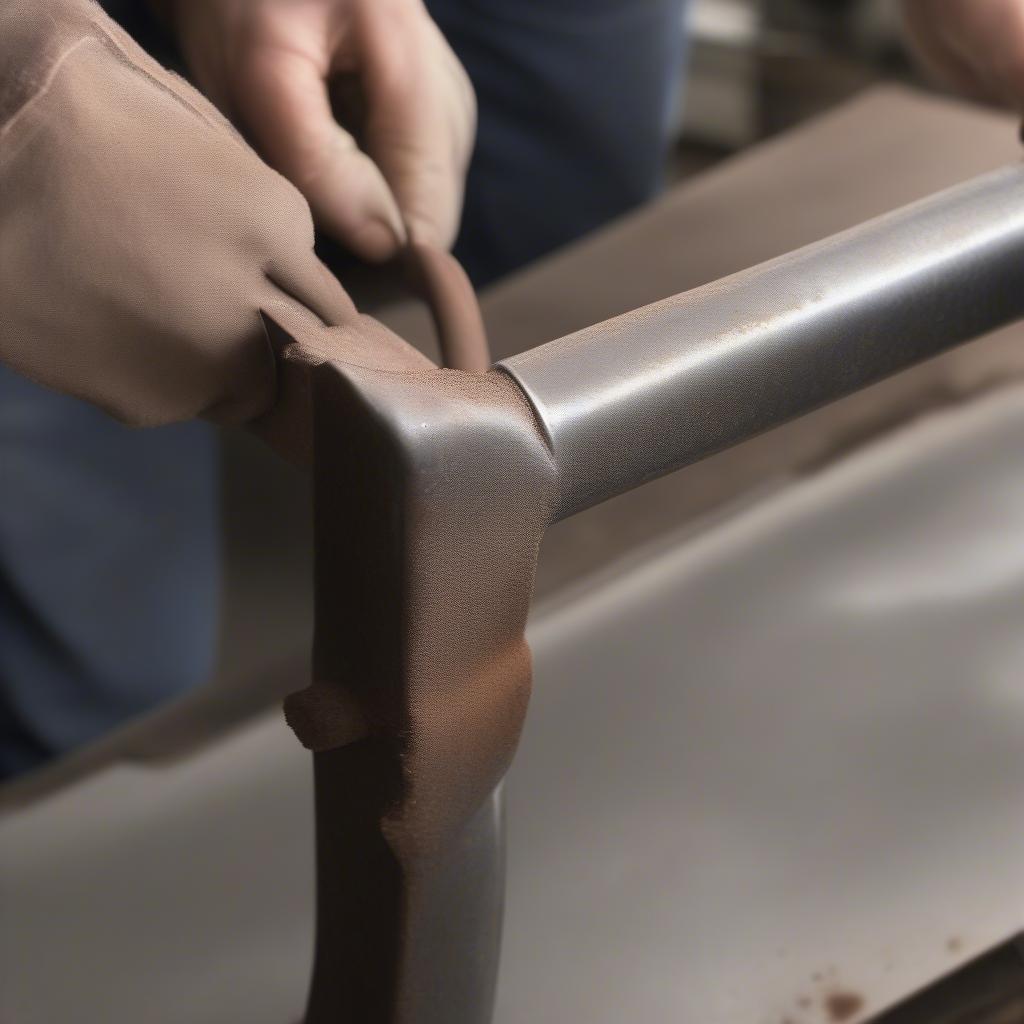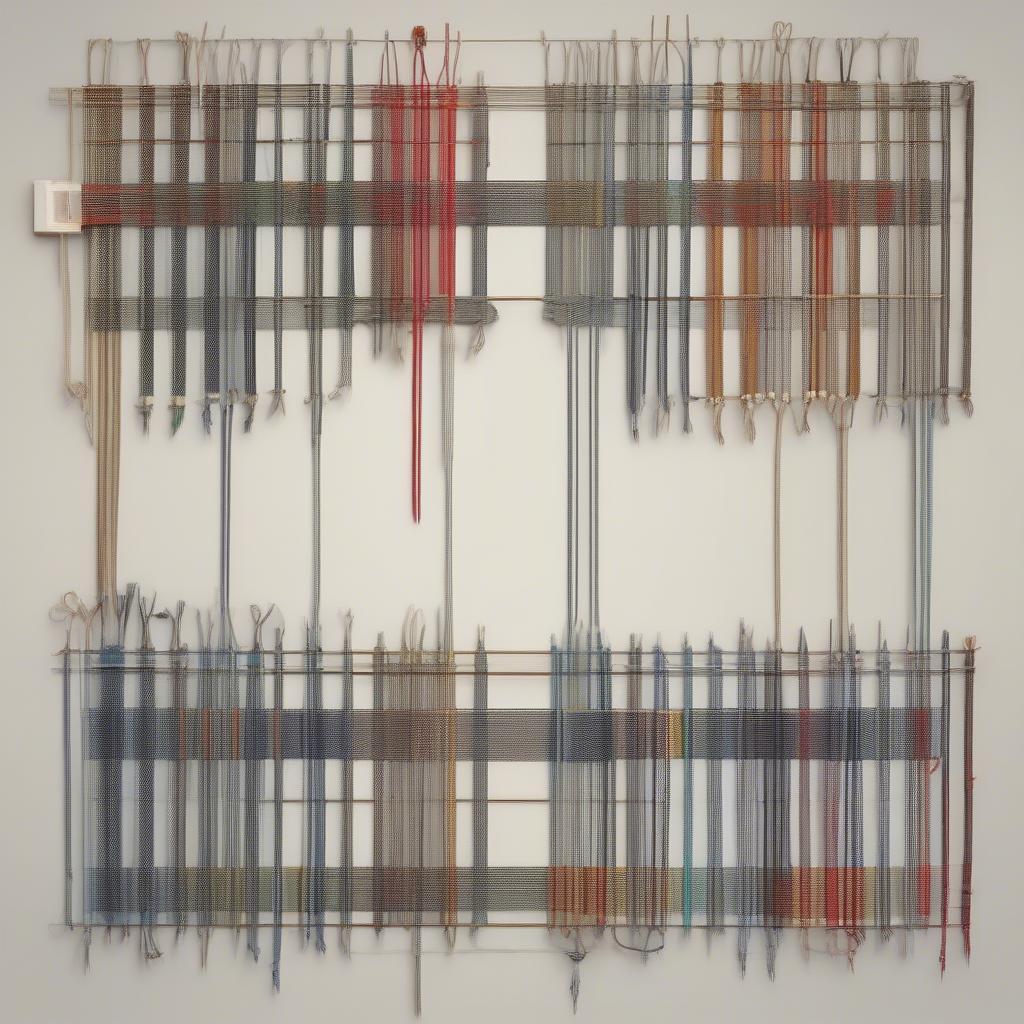Weave Chair
How to Weave a Metal Chair Seat with Webbing
Weaving a metal chair seat with webbing can transform a tired piece of furniture into a stylish and comfortable seat. This comprehensive guide will walk you through the entire process, from choosing the right materials to mastering the weaving techniques, empowering you to give your metal chairs a fresh new look.
Choosing the Right Webbing and Tools
Before you begin How To Weave A Metal Chair Seat With Webbing, you’ll need the right supplies. Webbing comes in various materials, including nylon, polypropylene, and cotton. Consider the chair’s location and desired aesthetic when selecting your webbing. Nylon and polypropylene are durable and weather-resistant, making them ideal for outdoor use. Cotton offers a softer, more natural look, suitable for indoor chairs.
You’ll also need a few essential tools: strong scissors, a measuring tape, and a lighter (if using synthetic webbing). A sturdy frame is also crucial for achieving a tight and even weave.
After this introductory paragraph, let’s delve deeper into the specific aspects of weaving a metal chair seat with webbing. Understanding the different patterns and techniques is key to achieving a professional and visually appealing result.
Preparing the Chair Frame
Ensure your chair frame is clean and free of rust or debris. Any loose paint or sharp edges should be sanded down to prevent snagging the webbing. This preparation step is vital for a smooth weaving process and a beautiful finished product.
 Preparing the Metal Chair Frame for Weaving
Preparing the Metal Chair Frame for Weaving
Now that the chair frame is prepared, it’s time to take accurate measurements. This will ensure you have the correct amount of webbing to complete the project seamlessly.
Measuring and Cutting the Webbing
Accurate measurement is crucial for a successful weave. Measure the width and depth of the chair seat, adding extra length to account for the weaving process and securing the ends. This extra length is essential to ensure a secure and taut finished seat. It’s always better to have a little extra webbing than not enough!
Cut the webbing strips according to your measurements. If using synthetic webbing, lightly seal the cut ends with a lighter to prevent fraying. This simple step will significantly prolong the life of your webbing.
Weaving Techniques: The Basic Over-Under Weave
The most common weaving pattern for chair seats is the over-under weave. This pattern is relatively simple to learn but yields a strong and attractive result.
- Starting with the vertical strips, weave them over and under the horizontal frame members.
- Once all vertical strips are in place, begin weaving the horizontal strips, over and under the vertical ones.
- Maintain consistent tension throughout the weaving process to ensure a tight and even seat.
 Over-Under Weaving Pattern on a Metal Chair Frame
Over-Under Weaving Pattern on a Metal Chair Frame
Securing the Webbing Ends
Once you’ve completed the weave, securely fasten the webbing ends to the chair frame. This can be achieved by tucking the ends under the frame and stapling them, or by using specialized clips designed for webbing.
Beyond the Basics: Exploring Different Patterns
While the over-under weave is a classic, there are numerous other weaving patterns you can explore. Basketweave, herringbone, and twill patterns can add visual interest and complexity to your chair seat. Learning these advanced patterns allows you to create truly unique and customized pieces. chair seat weaving tools can be incredibly helpful for these more complex designs.
Expert Insights
“Choosing the right webbing material is essential for both aesthetics and durability,” says renowned furniture restorer, Amelia Carter. “Consider the chair’s intended use and the overall style of your space.”
Another expert, John Miller, a master weaver with over 30 years of experience, adds, “Maintaining consistent tension throughout the weaving process is key to achieving a professional-looking finish.” His advice underscores the importance of practice and attention to detail in chair seat weaving.
Conclusion
Weaving a metal chair seat with webbing is a rewarding project that allows you to breathe new life into old furniture. By following these steps and choosing the right materials, you can create a stylish and comfortable chair seat that will last for years. Remember to explore different weaving patterns and don’t be afraid to experiment! How to weave a metal chair seat with webbing is a skill that improves with practice.
FAQs
- What type of webbing is best for outdoor use? Nylon or polypropylene webbing is best for outdoor furniture due to its durability and weather resistance.
- How do I prevent webbing from fraying? Seal the cut ends of synthetic webbing with a lighter. For natural fibers, consider using a fray-check sealant.
- Can I paint the webbing after weaving? Yes, you can paint webbing, but ensure it’s compatible with the webbing material.
- What is the easiest weaving pattern for beginners? The over-under weave is a simple and effective pattern ideal for beginners.
- How do I calculate how much webbing I need? Measure the width and depth of the chair seat and add extra length to account for weaving and securing the ends.
- What if my chair frame is uneven? Sand down any rough edges or protrusions to create a smooth surface for weaving.
- Where can I find more advanced weaving patterns? Numerous online resources and books offer detailed instructions for various weaving patterns.
You might also find our articles on chair seat weaving tools helpful.
Need further assistance? Contact our 24/7 customer service at +84 388 951 999, located in Hanoi, Vietnam, or at Tech Avenue, Suite 12, San Francisco, CA 94105, USA.
